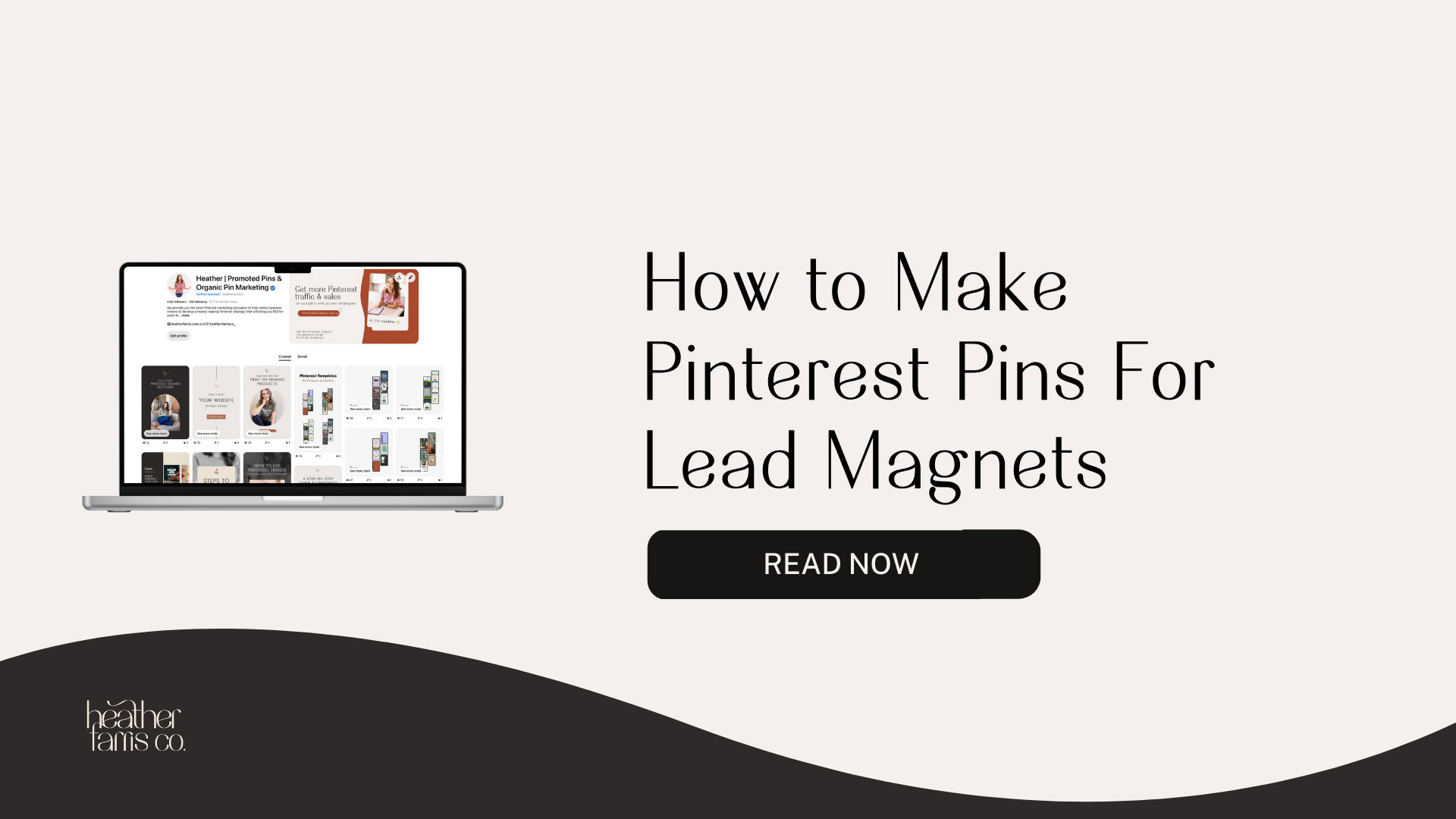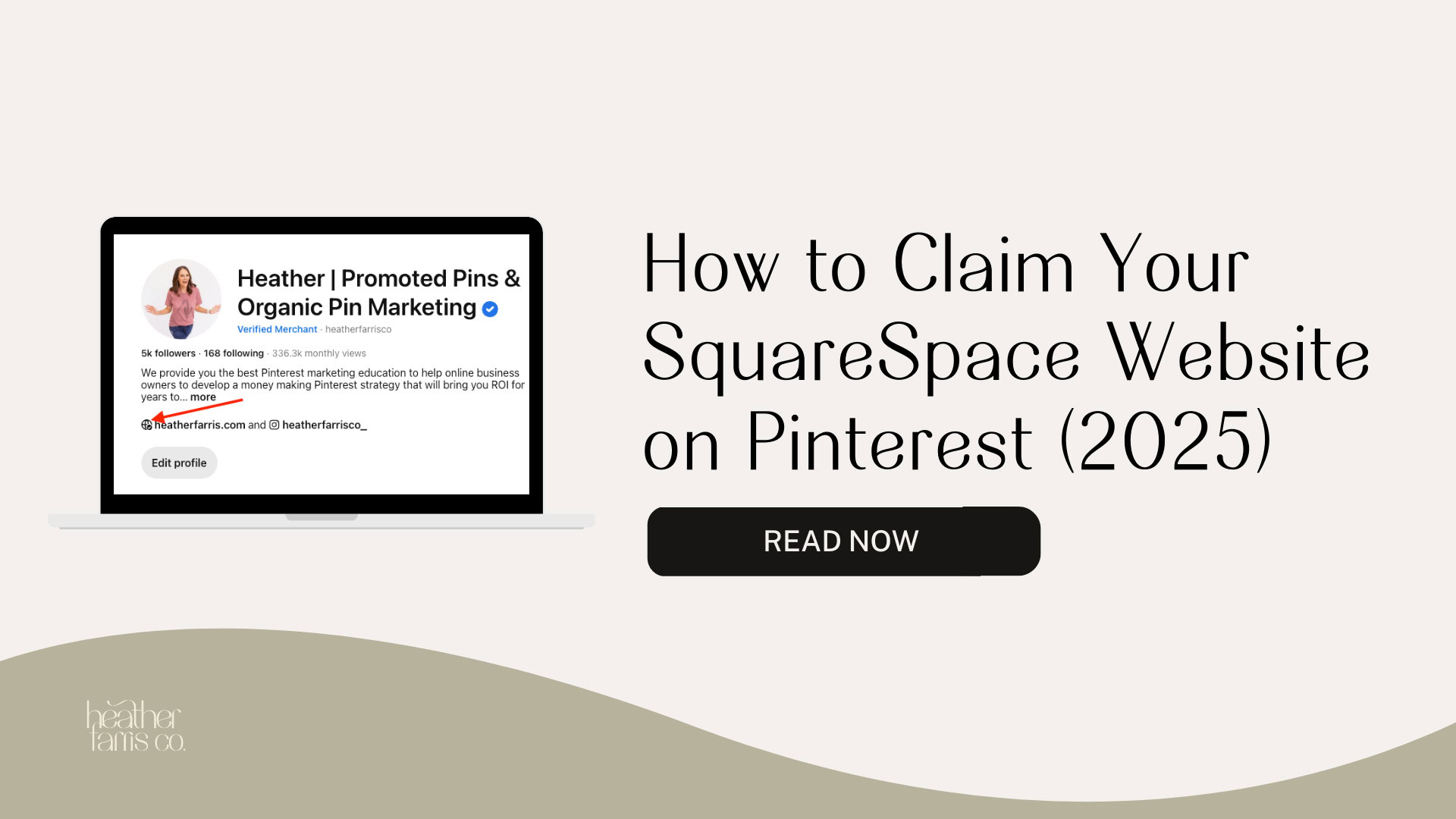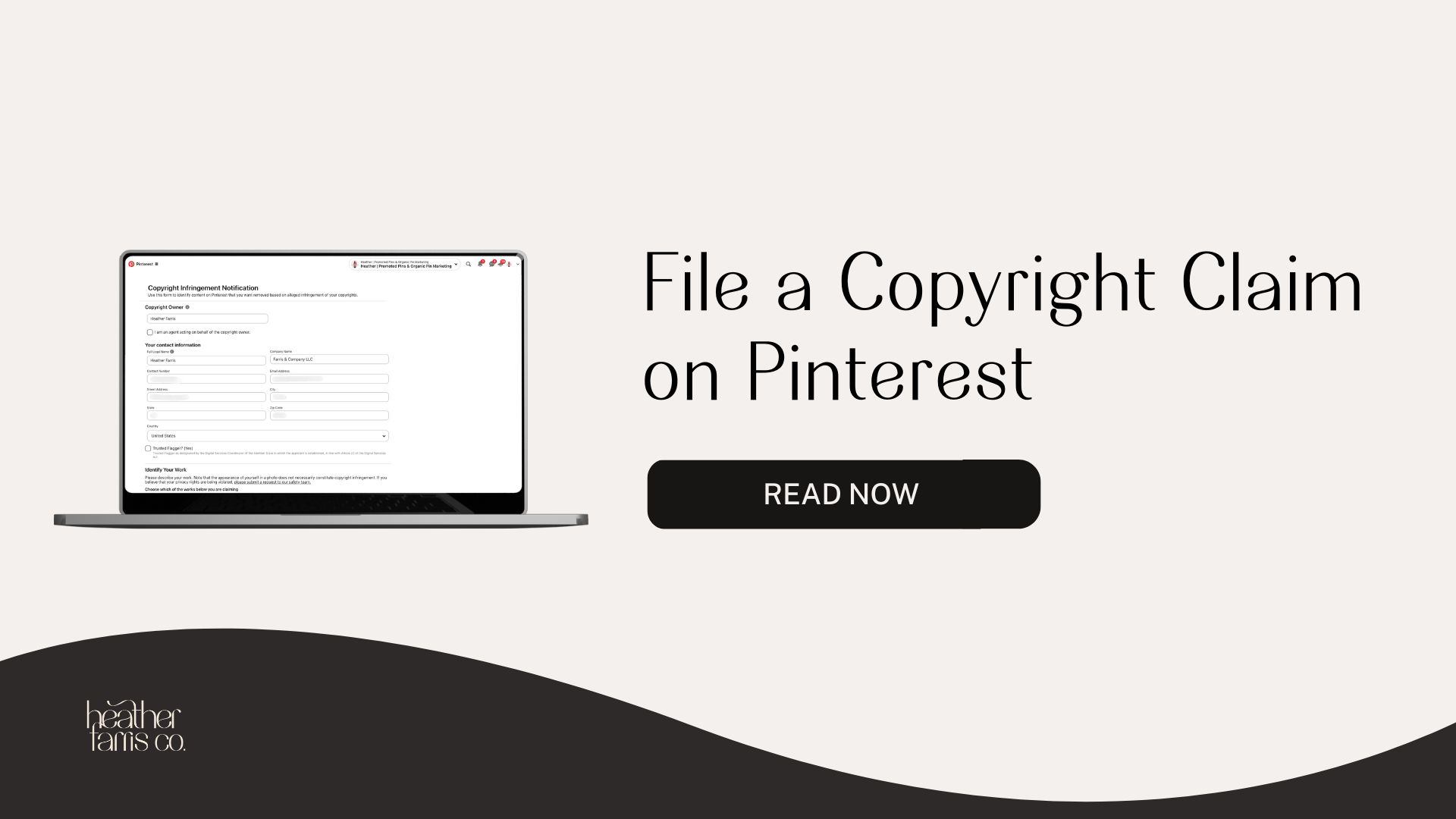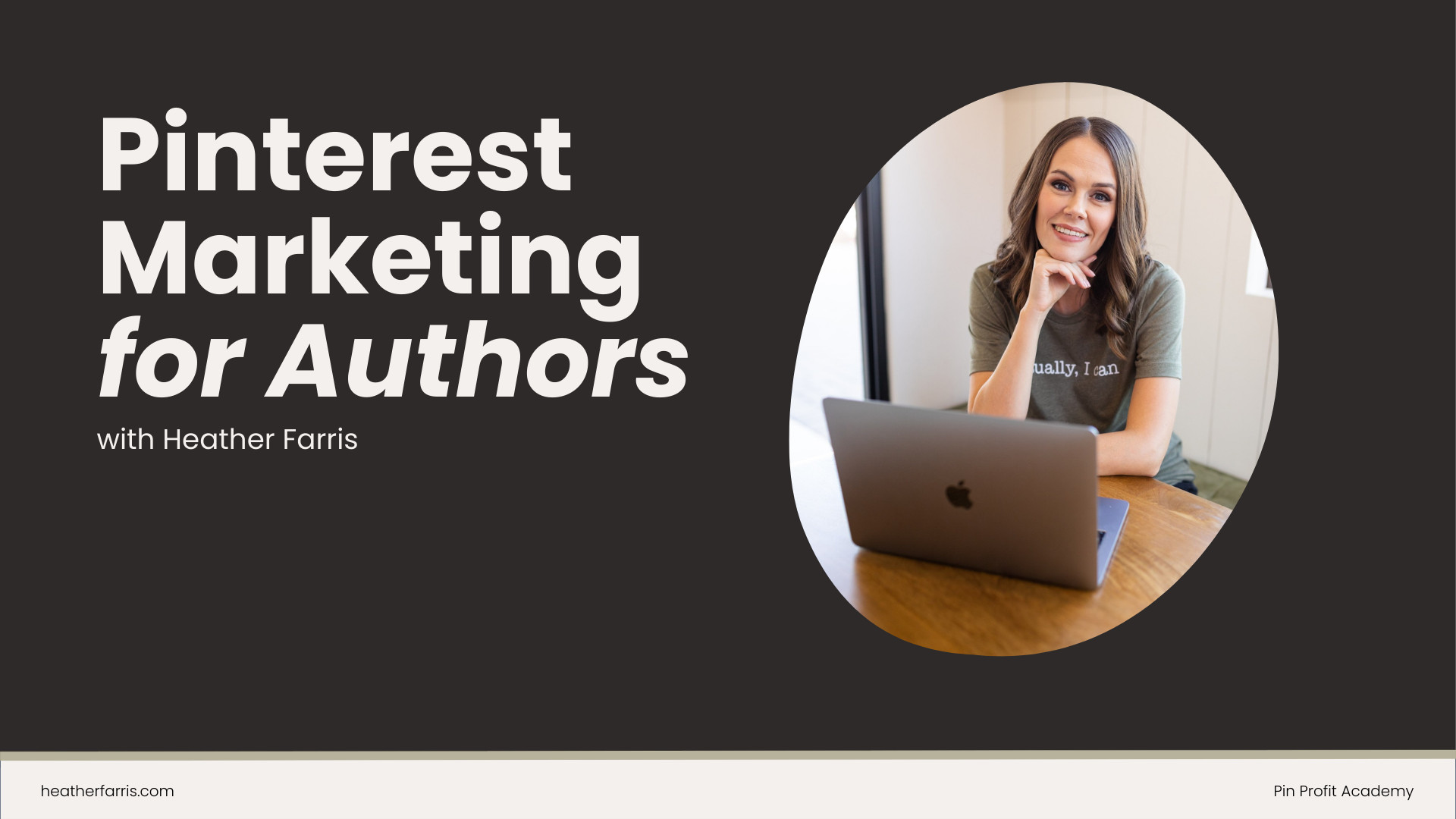Heather is a seasoned
Pinterest marketing expert & educator using the platform since you could reach the bottom of the feed - 2010.
About Heather Farris >
How to Create Viral Idea Pins to Stop the Scroll on Pinterest
November 29, 2022
So you want to create viral Idea pins that get more engagement and saves, but you are not sure how and don’t want to do face-to-camera content. Well, I’ve got you.
Create viral Idea pins in 5 steps
I’ve helped so many of our Pinterest clients get more engagement, views, and saves without having to do face-to-camera content, and today I’m going to teach you how to with Idea pins.
Now, of course, going viral isn’t guaranteed. But these five things drastically increase your odds. So make sure you:
- Use short, engaging video
- Bring value through text on screen
- Have catchy headlines
- Never leave the viewer hanging
- End with a call to action
RELATED: How to Outline Successful Idea Pins
#1. Use short, fast, and engaging video content for viral Idea pins
The first step to creating viral Idea pins is to create engaging content. That might be hard for some, so I will walk you through how I do that for myself and my clients.
To make this work, you first need to start by creating more engaging video content that isn’t necessarily you talking to the camera. You can simply set up your phone, use time-lapse, and film yourself. Be aware when you are doing time-lapse and you’re filming yourself to leave headroom at the top to put text there.
You also want to ensure that you’ve got room for text placement around you if you’re going to put text around you on the Idea pin editor. I recommend keeping your text to the left because all the engagement buttons are on the right side of the screen. Let us start with some examples.
I created an Idea pin that has gone mini viral for me on my profile (see below). My Idea pins usually get anywhere from 200 to 1000 views within the first couple of weeks of being posted. This one to date has received over 5,500 views and quite a lot of saves.
I set my phone up at the park and filmed myself writing on my iPad. You don’t have to do it this way, but you want to ensure you have good lighting.
RELATED: Creating Idea Pins With Video Even If You’re Not A Video Creator
#2. Create value through written content on the screen
The second step is to create value through the content on the screen of your viral idea pins. Whether you are doing this through behind-the-scenes content or written text on the screen, you can achieve this by doing the following.
In this example of a book Idea pin, this person said you could earn money by reading books. Then she flips her camera around after her hook (her first slide), and she walks you through examples of where you can go to earn money from reading books.
It’s behind the scenes, and it’s not fully just text on the screen. However, it shows the actual examples, which is valuable in and of itself. And the viewer knows what they’re getting from the start with her headline at the top.
Let’s go back to my first example in point number one. You can see here all of the text is coming up on the screen as the Idea pin plays. I’m giving the viewers the exact things they need to do to achieve the goal of the Idea pin, which is how to create a profile when you’re starting brand new.
I put those points on the screen. Now, you can do that both ways. You could do the behind-the-scenes or you can put the content on the screen.
Alternatively, you could have a part of the video at the bottom. That’s where your video is at the top, and you have a blank space at the bottom where you’re putting content. If you are doing it natively, you should know where you cannot go (the no-go zones) in the Idea pin editor.
RELATED: How to Create Video Pins for Pinterest & 6 Benefits of Using Video
#3. Use a catchy headline
You have to use a catchy headline to stop the scroll for viral Idea pins. Part of your catchy headline or hook is also what’s going to help that pin go viral. So back to the book example, this person has a fire headline. She’s holding the book in her hand, and she’s saying that you can get paid to read books.
She’s also using some common emojis that her audience probably resonates with, like the little glasses emoji, which is like nerd talk. So you want to make sure you’re using a catchy headline in order to stop the scroll.
#4. Don’t leave the viewer hanging with just the content in the video
Make sure you expand on that content and give context in the notes section. All the examples I’ve put in the description below have failed on points 4 and 5.
Point 4 includes:
- Use the notes section
- Give people links
- Tell them the products you’re using
- Tell them how to do the measurements in the thing
- Give them the next step
- Use a call to action in that space
#5. Use a call to action for viral Idea pins
Most of the Idea pins that are 60 seconds or less and are performing well are not using a call to action. It is not hard to do it. It’s an extra couple of seconds to think through what you want people to do after consuming this piece of content. I highly encourage you to do that part before you even hit the record.
Think about what you want people to do with this piece of content. That’ll help the pin go viral for you and to enable it to get seen by more people on the platform.
The call to action can be simple: Follow me for more.
I’m going to throw up a couple of examples here. This example of my Idea pin tells people to click the Mention sticker and follow me or go to my profile.
The second example is also of my Idea pin. In the first part of the note section, between two emojis, I write: Save this. I want people to save this pin for later. The entire goal of this Idea pin was to get saves on it so that I could get paid for it.
What is the goal? What do you want people to do? Use that as a call to action. I encourage you to do both. Use a call to action on the screen. Use a call to action in the notes section. Do not leave this part out because your competitors are probably doing it, and you’re not doing it, which means you’re potentially leaving money on the table.
RELATED: How to Increase Pinterest Engagement With This Single Tactic
Final thoughts on how to create viral Idea pins
Now you may wonder how to make Idea pins part of your regular workflow or Pinterest Strategy. That’s why your next step is to head over and watch this video: Pinterest Marketing Strategies – What I Would Tell My Friends.
I would encourage you to watch that video, outline your entire Pinterest strategy, and incorporate this tactic of short-from, 60-second or less, Idea pins into your regular strategy. I promise this will help your overall engagement and audience growth for years on Pinterest.
What’s Next?
Now at this point, you might be wondering how to make Idea pins a regular part of your Pinterest strategy without burning out.
Hop into Pin Profit Academy and start learning & join our weekly calls to get your questions answered.

Pin It For Later


Heather Farris went to school for accounting and worked for years in banking and finance. After finding all of that entirely too boring she started her first blog in her basement in August of 2016. She has started 3 blogs in the marketing, motherhood and travel niches and used Pinterest to grow them all. She quickly became the go-to Pinterest strategist in her peer circles and has been implementing strategies, driving traffic and sales through organic and paid tactics for her clients. On this blog and her YouTube channel, as a renowned Pinterest marketing expert, she educates the public about clear and transparent marketing strategies to help them to grow on Pinterest and in other places online as a renowned Pinterest marketing expert.





